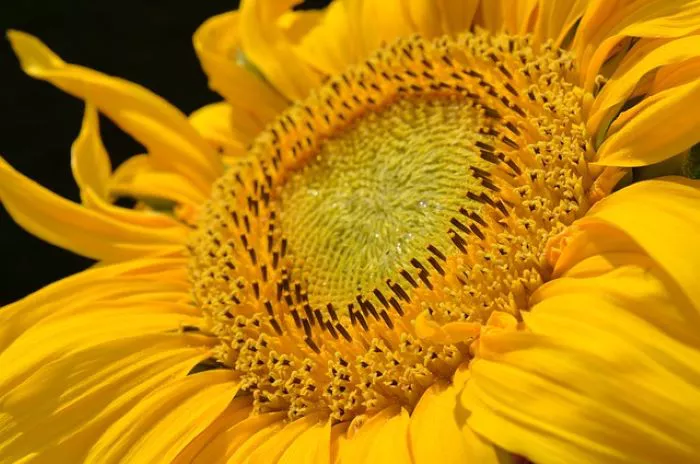Sunflowers are among the most recognizable plants in the world, known for their large, bright yellow flowers and towering height. While the flowers often steal the spotlight, the leaves of the sunflower plant are equally important for its growth and overall health. This article will provide a detailed description of sunflower leaves, including their shape, size, texture, and function.
Introduction to Sunflower Leaves
The sunflower plant, scientifically known as Helianthus annuus, is a member of the Asteraceae family. It is native to North America but has been cultivated worldwide for its seeds and ornamental value. Sunflower leaves play a crucial role in the plant’s ability to photosynthesize, which is essential for its growth and development. Understanding the characteristics of sunflower leaves can help gardeners and plant enthusiasts better care for these remarkable plants.
Leaf Shape and Structure
Sunflower leaves are typically broad and heart-shaped. The shape can vary slightly depending on the sunflower variety and its growth stage. The leaves emerge from the stem in an alternate pattern, meaning that they do not grow directly opposite each other. This arrangement allows for maximum sunlight exposure, which is vital for photosynthesis.
Size: Sunflower leaves can vary in size, but they are generally large. Mature leaves can reach lengths of 6 to 12 inches and widths of 4 to 10 inches. The size can be influenced by factors such as soil quality, water availability, and sunlight exposure.
Margins: The edges of sunflower leaves are typically serrated or slightly toothed. This feature adds to the leaf’s overall texture and can help distinguish sunflower leaves from those of other plants.
Veins: Sunflower leaves exhibit a prominent venation pattern. The veins are usually arranged in a palmate pattern, radiating from a central point. This structure helps transport water and nutrients throughout the leaf.
Leaf Texture and Color
Sunflower leaves have a distinct texture and color that contribute to their unique appearance.
Texture: The surface of sunflower leaves is generally rough and hairy. This texture helps reduce water loss through evaporation, making the plant more resilient to dry conditions. The hairs on the leaves can also provide some protection against herbivores.
Color: Sunflower leaves are usually a vibrant green, though the shade can vary. The color can range from a light, almost yellowish green to a darker, deep green. The intensity of the green can be influenced by factors such as nutrient availability and sunlight exposure.
Leaf Arrangement and Growth
The arrangement of sunflower leaves on the stem is important for the plant’s overall health and growth.
Alternate Arrangement: Sunflower leaves grow alternately along the stem, allowing for optimal light capture. This arrangement helps prevent shading of lower leaves, ensuring that all parts of the plant receive adequate sunlight.
Growth Stages: As the sunflower plant matures, the leaves will continue to grow and expand. Younger leaves tend to be smaller and may have a slightly different shape compared to mature leaves. As the plant grows, the lower leaves may yellow and die off, while new leaves emerge at the top.
Function of Sunflower Leaves
Sunflower leaves serve several essential functions that contribute to the plant’s overall health and productivity.
Photosynthesis: The primary function of sunflower leaves is to carry out photosynthesis. The large surface area of the leaves allows them to capture sunlight effectively. During photosynthesis, leaves convert light energy into chemical energy, producing glucose and oxygen.
Transpiration: Leaves also play a crucial role in transpiration, the process by which water is absorbed by plant roots and released as vapor through small openings called stomata. Transpiration helps regulate the plant’s temperature and maintain nutrient flow.
Nutrient Storage: Sunflower leaves can store nutrients, which can be utilized by the plant during periods of growth. This storage capability is particularly important during the flowering stage when the plant requires additional energy.
Conclusion
Sunflower leaves are an essential part of the plant’s structure and function. Their broad, heart-shaped appearance, serrated edges, and rough texture contribute to the sunflower’s ability to thrive in various environments. Understanding the characteristics of sunflower leaves can enhance a gardener’s ability to care for these beautiful plants.
By recognizing the importance of leaves in photosynthesis, transpiration, and nutrient storage, gardeners can appreciate the role that sunflower leaves play in the overall health of the plant. Whether grown for their stunning flowers or their seeds, sunflowers remain a beloved choice for gardens and landscapes worldwide.


